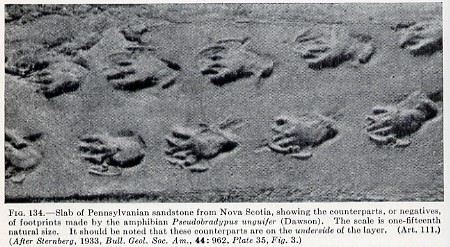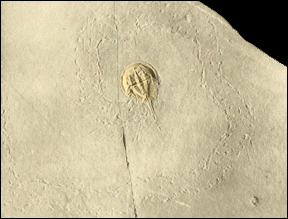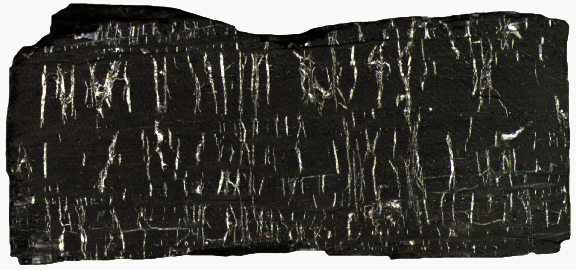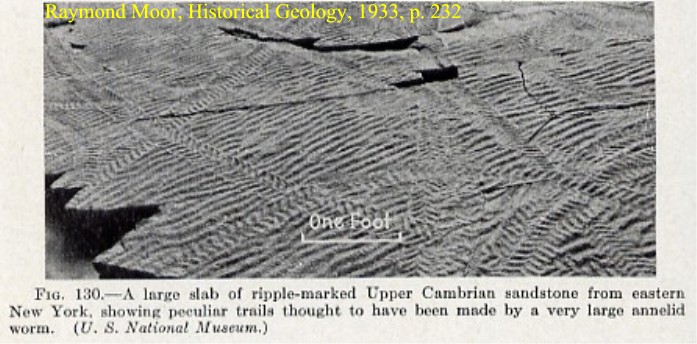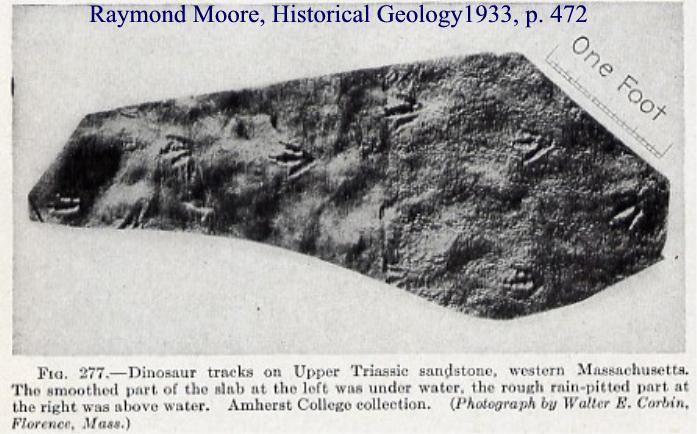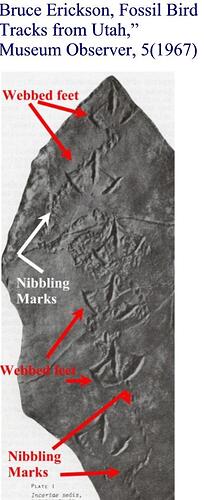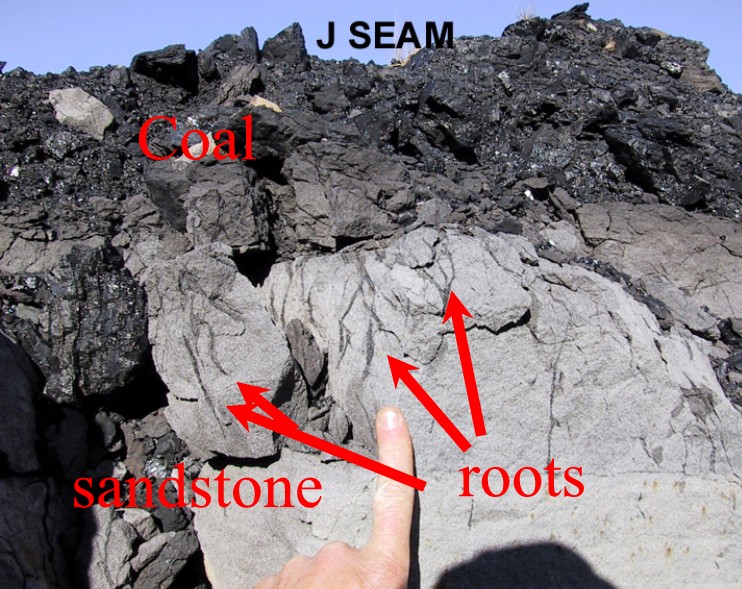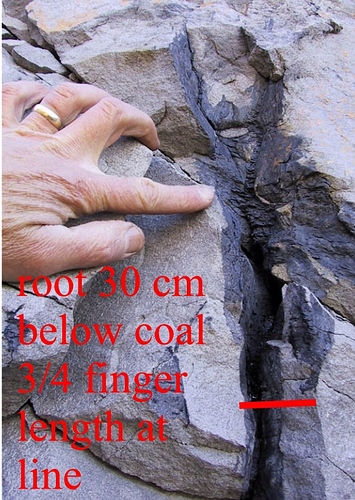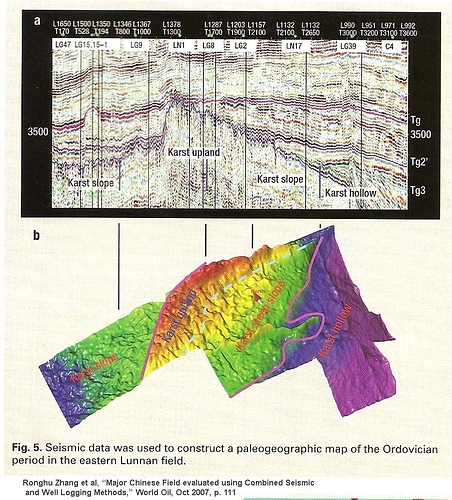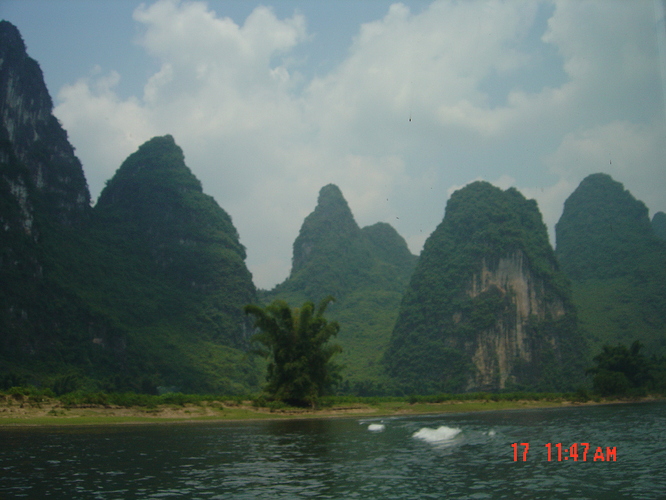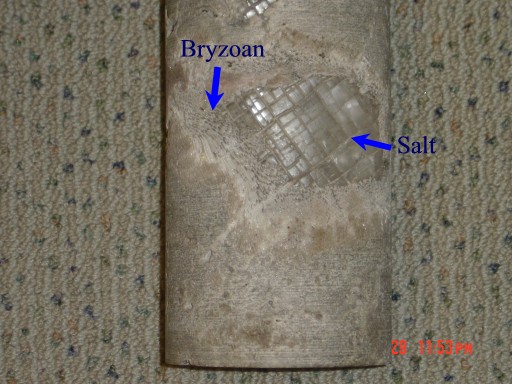Well, to start, they produced the topic of this thread:
Debunking Evolution Taught in Public Schools video series for students
And my compiled responses to points from those videos follow (some slight edits and additions post-posting):
If there are topics in the video not addressed here, let me know.
2a: Radiometric Dating:
Time is all-important to evolution.
In some ways, yes.
Age of earth entirely dependent on radiometric dating.
Scientists have thought it had to be at least a few million years old since the late 1700s.
“It sure seems they are putting a lot of faith in something [radiometric dating] they can’t actually test through direct observation.”
Radiometric dating is easily tested by direct observation. How do you think we can determine half-lives?
Plenty of assumptions go into these measurements.
Yes, but they are well-grounded assumptions.
Age of earth is based on dating meteorites, and they are assumed to be the same age as Earth.
Yes, but we have dates on terrestrial-origin zircons back to 4.05 billion.
Rocks contain radioactive parent isotopes that decay into stable daughter isotopes.
Many isotopes have decay chains that run through many radioactive isotopes
Age is an interpretation, not an observation.
Just like any other derived measurement.
“What if the rock already had a daughter isotope from the beginning? Or what if the rock gets contaminated? Or what if the rate of decay was rattled at some point in the past? What was the original ratio of parent to daughter isotope? One must assume that no parent or daughter material was added or removed from the rock; and that the rate of decay has always been constant over millions and millions of years.”
Those are taken into account. If the decay rate isn’t constant then all atoms larger than hydrogen would have fallen apart.
Different mineral components give highly varying radiometric dates.
Yes, because the grains in sedimentary rocks are older than the rock by definition. Also, some of those grains might not contain enough of a parent isotope to be sensibly datable.
Known age igneous rocks give noticeably older dates.
That is because of contamination. They are never off by more than 10-20% of the half-life. For K-Ar dating, with a half-life of 1.25 GY, 10,000,000 years and 50 years are basically the same, given that the error bar is more like 100,000,000: 0.01 ± 0.1 and 0.00000004 ± 0.1 are identical.
Ono formation supposedly ~112 MYA. Fossils give dates of 36,000 in C-14.
That is because of contamination. 36,000 for C-14 is basically none left.
C-14 is found in diamonds.
That is because of contamination. 100,000 for C-14 is basically none left.
6a Fossils.
Claims:
Evolution predicts that we should find the simplest fossils in the lowest rock layers.
We do.
“Some of the lowest rock layers with fossils, called “Cambrian”, reveal incredibly complicated creatures right at the start.”
There are lots of layers below the Cambrian.
“If evolution were true, we would expect to see single-celled organisms down there, then basic-looking multi-celled… Instead we see incredibly complex sea creatures with no clear ancestors in the lower rocks.”
Which is exactly what we do see. Primarily what we have somewhat older are things where we just don’t know what they really are (e.g. Kimberella ). Plus, the frequency of preservation goes down the older you get.
“The Cambrian presents a dramatic explosion in animal variety, including an example from every one of today’s major groups, plus more besides.”
All the ones which have any chance to fossilize first appear somewhere in the ~200-million year stretch from where we find the first animal fossils to the end of the Cambrian.
“There are no simpler creatures leading up to them.”
Only if you ignore the ones that do.
“The expected transitional fossils are missing.”
Not any more than all the other fossils.
Quotes On the Origin of Species: “Why, if species have descended from other species by insensibly fine gradations, do we not everywhere see innumerable transitional forms.”
We have much better material now.
“If evolution were true, we should have millions that show us the evolution between all these animals.”
And if the fossil record perfectly preserved things.
Archaeopteryx: quotes Alan Feduccia “Paleontologists have tried to turn Archaeopteryx into an earth-bound, feathered dinosaur. But it’s not. It is a bird, a perching bird. And no amount of ‘paleobabble’ is going to change that.”
A bird with teeth, a bony tail, claws, and some other rather un-modern features.
“ Archaeopteryx was even further disqualified as an evolutionary ancestor for birds when scientists found what appears to be a crow-sized bird, and extinct four-winged birds in rock layers designated to be below those containing Archaeopteryx .”
Transitional forms usually stick around after the initial transition: I am alive, therefore my parents cannot be is very bad logic. Those birds are clearly transitional: they have teeth, then have claws on their hands, etc.
Tiktaalik is no good as a transitional organism, due to “footprints of a four-legged land creatures in rocks that are supposedly ten million years older than Tiktaalik.”
Transitional forms usually stick around after the initial transition: I am alive, therefore my parents cannot be is very bad logic. Tiktaalik had a neck and limbs, but it also has lateral lines and labyrinthodont dentition.
“We see that there are many more kinds of animals than we have today.” “And many of those went extinct.” “Opposite of evolution.”
That is exactly what we would expect from an old earth, not a young one. Also, the diversity at any one time has been generally increasing (with some interruptions).
“Fossil graveyards contain animals from land, sea, and air all jumbled together; and, in many cases, the destruction was so powerful that fossilized creatures were ripped apart and buried quickly in mud. And 95 % of the entire record is marine fossils buried in land rocks, not ocean bottom sediments. Many layers that contain fossil are so large that they stretch over many states, sometimes across continents.”
What does “Marine fossils buried in land rocks” mean? Sure, most of the grains washed offshore, but that’s what shallow ocean sediment is always like.
The lack of sand in Carolinian Eocene deposits clearly indicates an offshore position, not a mixture. Why are Pteropods, or Spisula , or Raeta , or Eulimids, or anything else fragile ever preserved, if everything is getting smashed? Why are deposits not highly sorted, as they would be with any sort of fast current? The fact that they are buried in mud discredits the massive destruction being invoked, as the mud could not settle. How are there index fossils for each layer which show up in no others? If everything is getting mixed around, then Chesapecten should be ubiquitous throughout the southeast US deposits.
6c
Extinction: Noah’s Flood & Ice Ages
Five different mass extinctions
More like 10, and a bunch of smaller ones.
“Some scientists dated the dinosaur extinction 300,000 years after [Chixulub]”
Things do not die instantly after an impact, also, the margin of error is high enough to make 300,000 years insignificant.
The proposed causes for mass extinctions, other than Chixulub, are exactly the set of events that would be happening with the flood.
How does massive desertification fit with a flood? How does massive glaciation fit? And I don’t see mention of asteroid impacts and volcanic eruptions making giant tsunamis in the boiling opaque slurry/ocean in Genesis.
All dinosaur graveyards are deposited in “watery mud or sand”
That’s what preserves lots of individuals quickly.
“Many dinosaur fossils are found in a classic death pose with their necks arced back, possibly from choking.”
It’s called “rigor mortis”.
“[the flood] does better explain what we see.”
Only if you ignore and misrepresent everything you see.
“There’s a lot of volcanic material mixed into these layers. Vast amounts of volcanic material entered the oceans. That’s what makes up seafloors around the world. And that relates to the Ice Age. Storm-tracking models show that warm oceans would cause severe storms, and lead to massive snowfall.”
There is NO volcanic material found in any Carolinian marine deposits, outside of one Eocene layer. Drastically higher water temperature would NOT lower sea level.
“Hotter oceans make colder continents”
In a completely different pattern from the observations. A boiling opaque slurry for oceans, as the conditions this proposes would create, would kill all life on the planet and destroy every fragile fossil, wherever it was.
“Volcanic dust and debris would have blocked out the sun during the summer, so the falling snow would not have melted.”
Except for all the asteroid impacts and high-speed plate tectonics vaporizing the planet.
The “fountains of the deep” refers to massive volcanic eruptions releasing lots of water.
That’s definitely not how the ancient Hebrews would have understood it.
“Evolutionists don’t have a satisfactory explanation for one Ice age, let alone four or five. But, the flood gives enough calamity in a short amount of time to actually make an Ice Age, if there was only one, that happened only a few hundred years after the flood.”
Milankovic cycles do a very good job of explaining the dozens of short glacial periods in the late Cenozoic, which a giant flood deposition scheme is completely incompatible with. For larger-scale glacial periods dramatic increases in oxygen level, and/or the presence of landmasses near the poles seem to correlate well, if we have any data.
“Which would explain many of the Ice-age fossils we find near the surface of the earth, not deep down in the flood layers.”
Why are there dropstones and glacial erratics embedded in meta-sedimentary rocks in the local mountains, which are clearly below all of the coastal marine faunas, including the ones with some dinosaur bones, which are below ones that mostly contain marine mollusks?
“The book of Job was written just about that time, and mentions snow, ice, and cold more than any other book in the bible.”
Where does it say that it was written then? Also, none of the Egyptian texts from this time mention it much, or a much wetter Sahara, so that seems a bit tenuous.
“So, when scientists try to stretch five extinctions and five different Ice ages over the evolutionary view of the geologic column, they’re not sure how they happened. But, when you compress the geologic column down into a biblical timeframe, it’s all explained by a worldwide flood followed by an Ice age.”
Really inaccurately explained by a worldwide flood.
6b
Whale Evolution
“[Whales] would need to evolve a brand new respiratory system.”
They still have lungs.
“Their teeth would have to evolve into baleen.”
Current thought is that transitional forms had a combination of the two.
[Some of the other things listed that whales would have to evolve]:
Ball vertebrae, Tail flukes, Blubber, Ability to drink sea water, Forelimbs into flippers, Blowhole, Ability to see properly underwater, Reorganized skull bones and muscles, Modified ear bones, growing several hundred times bigger.
Flukes are just a flattened tail. Blubber is found in practically all mammals. A blowhole is just a nostril that can seal well. Changing substantially in size is not particularly difficult: Palaeoloxodon includes species ranging from 90 cm at the shoulder and 200 kg to 6 m at the shoulder and 20,000 kg. Truncatelloidea includes groups that are terrestrial, freshwater, and marine.
Quotes textbook “Mesonychids are one hypothesized link between modern whales and certain hoofed mammals.”
Currently, no. Mesonychids are considered to be a separate stem ungulate group.
“The entire evolutionary ancestry of whales is based on an imaginary creature.” [last common ancestor of the horrendously polyphyletic pairing of artiodactyls and wolves]
Said imaginary creature is one which nobody sane thinks existed. A common ancestor of cetartiodactyls is another matter, or of cetartiodactyls, perissodactyls, pholidotans, and carnivorans.
Pakicetus was shown to be “nothing more than a land animal.”
An amphibious animal with cetacean ( Basilosaurus -like) dentition.
There were only two fossils ever found of [ Ambulocetus ].
That makes no difference, given that they were good specimens.
“[ Ambulocetus ] appears to be nothing more than a land animal. In other words, it was defined as a walking whale; not because it had a whale’s tail or flippers, or a blowhole, but simply because they believed it to be. In fact, they didn’t even find the part of the skull that would have a blowhole; but they still add a blowhole in museum drawings.”
Ambulocetus was distinctly built for swimming.
“[ Rodhocetus ] is often depicted…with a tail fluke, however, they never found the fossil bones for their tail.”
It doesn’t have a fluke in any of the illustrations you show.
“[ Basilosaurus ] seems to be nothing more than an extinct sea creature, with what appears to be leftover legs from evolution.”
It is an “extinct sea creature” by definition, it has a whale build, but with weird teeth; so is Carinorbis lyra , which is very distinctly not a whale.
“[ Dorudon ] appears to be nothing more than an extinct whale.”
With teeth that look quite a lot like those Basilosaurus , and not like any modern whale.
2b
Uniformitarianism
Lots of scientists believe continents move at irregular speeds.
Yes. Over very short time scales.
[John Baumgardener] showed that continents can move very quickly.
No.
“[Uniformitarianism] refuses to take into account the major catastrophic events of the past.
Only Lyell and Darwin were that obstinate.
“During the 1980’s eruptions at Mt. St. Helens, 200 layers of rock were deposited in three hours. Entire river systems were carved in a matter of months right through 700 feet of hard rock.”
Volcanic ash. Not sedimentary rocks. And those 700 feet could hardly be termed “solid”.
“If [the layers in the Grand Canyon] took millions of years to form, then the bottom rock layers would be hard and brittle by the time the ones at the top would be deposited. But, near the Grand Canyon, all the layers are bent together. If they were bent together while they were hard [they would break]. The rocks didn’t shatter like they should have, they must have been together while they were soft and pliable.”
They did break. And those bends are pretty large. Even rocks are flexible, if the distance and time are long enough.
“If the river slowly carved the canyon, then we should see all the material piled up in the river delta, but it’s completely missing. In fact, about 1000 cubic miles has been eroded to form the Grand Canyon. Where did it all go? If the canyon was slowly eroded by the Colorado River, an enormous delta should be found at the mouth of the river where it empties into the Gulf of California; but, the delta includes only about 1% of the material we would expect if the evolutionary explanation were true.” “Unless it was carved by a massive catastrophe which carried all the material away.”
The only true statement in this paragraph is the volume of the canyon. All of the material is in the gulf, but not all of it is above sea level.
“What happens to a clam when it dies? They open up, and their two shells separate. But this clam was fossilized before it had a chance to fall open, or be pulled open by a scavenger.”
Most fossil clams are not paired. And they wouldn’t open if they are already buried, WHICH THEY QUITE FREQUENTLY ARE. Also, how do clams get giant lithophagine holes going through them post-mortem if they are getting buried within minutes? How do we get stacks of layers with alternating freshwater and marine conditions, all of them containing organisms that lived for 20+ years, if each layer was deposited in hours?
The well-known fossil of the Ichthyosaur giving birth had to be buried quite quickly.
Yes. But how many small pieces of ichthyosaurs do we have compared to near-perfect ones?
“And they’ve found many dinosaur fossils with red blood cells, soft tissue and even DNA.”
Impressions of red blood cells. Collagen is not bone, but it is still quite tough. Tiny fragments of extremely degraded DNA. If they were only a few thousand years old, we should have hundreds of complete dinosaur genomes.
“But all of these could have been fossilized during the worldwide flood.”
No, they would all be smashed in tiny pieces.
“It doesn’t take millions of years to form a fossil. It can happen rapidly under the right conditions.”
Which are extraordinarily rare.
3a
Did humans evolve?
All of the old ape-men ideas were fakes.
Or misidentifications.
“In our book it says that Australopithecus afarensis evolved 3-2.8 MYA. In this book it says that Australopithecus evolved 4-5 MYA.”
How are those contradictory?
1951 Life article says that Australopithecus lived ~700 kYA.
That article was wrong.
It was claimed that Homo erectus had a human body, but a different skull. But, in 2013 there was a study showing that many of the differences used to distinguish H. sapiens from H. erectus blur together.
There are still characteristics that distinguish them.
Many specimens of H. habilis are of debated identity, and the genus assignment is uncertain. [Therefore, they don’t exist as a species.]
Same is true for most pleurocerids, which says nothing about whether they exist, or belong in Elimia or Pleurocera (both, sensu latu , probably constitute about five different genera, which are highly cryptic).
The remains of Lucy are quite fragmentary.
So are most dinosaurs. So are my fossil pholadids. All three are distinctive
Lucy was actually a Bonobo-like creature, based on the skull.
Her body is rather different from a Bonobo.
Quote to the effect of “True Australopithecus is not a direct ancestor of Homo. ”
Cladistically, it cannot be, because if it were, then Australopithecus would be a grade. And Australopithecus sensu latu is a grade. Some species of Australopithecus are not ancestral to Homo , but many are.
Neanderthals and Humans can interbreed, therefore they are identical by definition.
Nobody thinks that all species of Larus are identical, yet they can interbreed freely. They usually don’t, but a hybrid Larus is not an uncommon find.
“So either these fossils are completely human, or completely ape, with nothing in between.”
That is a horrendous a-priori false dichotomy.
